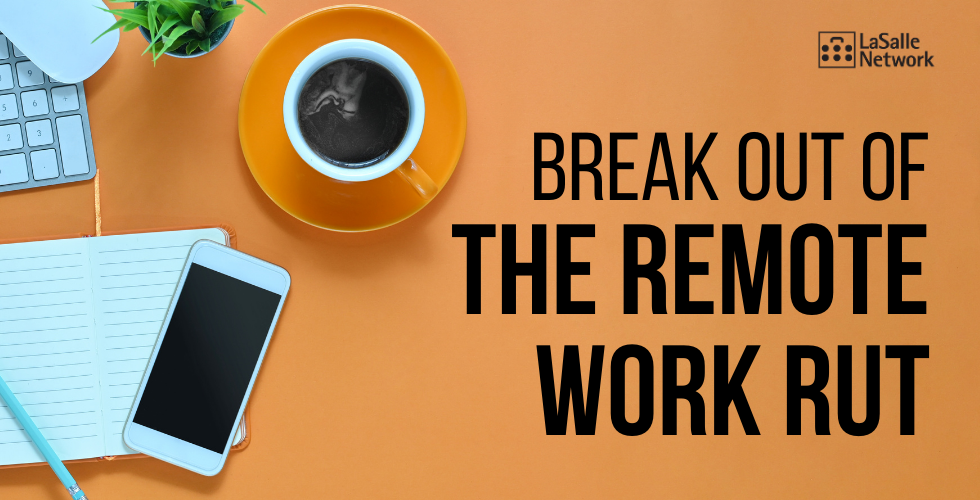For those who have been working from home for the duration of the pandemic, life may have begun to feel like the 1993 Bill Murray movie, Groundhog Day, where everyday repeats itself. Many remote workers may be caught in a cycle of hitting snooze a few too many times, re–wearing the same pair of sweatpants, taking the same 20-minute walk at lunch, and having the same stale conversations about the weather.
Without a commute, after-work happy hours or the many casual and random interactions with coworkers we once had in-office, it may be easy slip into simply going through the motions. This can lead to disengagement, a decrease in productivity, and even burnout as the days begin to blur.
Get out of the endless loop by adding variety, energy, and intrigue into your routine.
Wake up earlier than you think you need to. As tempting as sleeping in and rolling out of bed for work may be, it doesn’t necessarily benefit energy levels or set up the day for success. For one week, try waking up one hour earlier than necessary to allow ample time to get physically and mentally ready for the day.
Dress the part. For some, getting dressed for work can actually increase performance and focus by helping differentiate when it’s time to relax versus when it’s time to roll up your sleeves and produce. Give the sweatpants a break for a week to remember what you used to do in the morning before going into the office, and mimic that.
Do your commute. Working from home means no more daily commutes, and for many, the commute was a time to transition into and out of a workday. Consider simulating the commute by dedicating time in the morning and evening to take a 20-minute walk or drive. Listen to motivational podcasts, read the news, or listen to a playlist that gets you energized – doing whatever you did on your traditional commute. This can provide time to think, reflect, shake off stress, and even improve mental health.
Get comfortable, but not too comfortable. Reflect on your current work setup. What is working, and what’s not? Consider if there is any additional equipment that might help boost productivity, or if the location of your workspace is ideal. If you’ve picked up the habit of sitting on a couch or bed while working, stop that immediately and find a designated spot to work that isn’t’ those two. If you spend most of your day sitting, configure a makeshift standing desk for a change. Because you spend a significant part of your day in that space, make sure the area is clean, quiet, comfortable, and has all the resources you may need.
Tidy up your space. Too many papers or nick-nacks cluttering a workspace can pull away attention and focus, and further reinforce the feeling of being weighed down. Remove anything that is not necessary. Physically clearing off the workspace can signify a fresh start and help aid organization.
Cross train your brain. Studies have shown that learning something new that is not directly related to your field of work can improve brain functions such as concentration, attention, and problem–solving. Take a few hours a week to research a new topic or learn a new skill unrelated to your direct tasks or responsibilities at work.
A change in routine may be necessary to help reenergize and reengage in your career. Take control of the day and redirect energy in a way that benefits your mental and physical health.
Are you looking for a new role? You can view our open jobs here.





